CES 2024 is the last major chance for producers of AR and VR headsets to make a splash before the Apple Vision Pro is released. Here's what Apple's rivals unveiled in Vegas.
The Apple Vision Pro will be released in the United States on February 2, in a move that could make a major impact on the virtual reality and mixed reality headset market. With Apple finally reaching out into the headset industry, this gives other manufacturers only a few more weeks to impress the public with their own devices.
At CES 2024, a number of companies are doing just that, using the trade show to hawk new head-mounted displays, to try and earn customers before Apple's heavyweight comes into play.
What follows is a roundup of headsets, smart glasses, and associated technologies that surfaced at CES for 2024.
Sony
Already a headset maker for its PlayStation 5, Sony announced an intention to create a Spatial Content Creation System, in partnership with Siemens. While it doesn't have a name yet, the headset is billed as a "high-quality XR head-mounted display and controllers dedicated to interaction with 3D objects."
A standalone headset, it will use 1.3-inch 4K OLED microdisplays, and will allow users to view their environment via a see-through function, thanks to six external cameras and sensors. A ring controller will be used for object manipulation, while the pointing controller is intended for precision work.
It will run on Qualcomm's Snapdragon XR2+ Gen 2 Platform, combined with Sony's proprietary rendering technology to handle real-time realistic rendering of 3D objects and the facial expressions of human characters.
Unlike its PlayStation VR headset, this new version is meant for content production, including creating and modifying 3D models in a virtual or mixed-reality environment.
Sony says it wants to bring out the unnamed headset sometime in 2024.
Asus AirVision M1
The Asus AirVision M1 wearable display is not strictly a VR or mixed-reality headset, but really should come under the banner of smart glasses. They are glasses you can wear on your head, and they do have displays, but it's more for producing virtual screens than for 3D content.
Consisting of a micro OLED display with a 1080p resolution for each eye, the AirVision M1 allows the user to see their local environment as well as a screen right in front of their eyes. That screen can also be bright at up to 1,100 nits, with it also having 95% coverage of the DCI-P3 color gamut.
When used, there's a vertical field of view of 57 degrees, said to be higher than the 55 degrees of natural vertical viewing, and the 40 degrees of most AR glasses.
Instead of a single display, users can set up multiple virtual screens around them, and with three degrees of freedom, they can be viewed relative to the location of the source device. That local device is connected to a host via a USB Type-C connection, with a port hidden in the frame.
On the side of the frame is a multi-function touchpad, which can control content playback or for users to switch between displays. A 3D viewing mode is also available for content, while noise-canceling microphones and speakers are included for remote conferencing.
Pricing and availability hasn't been confirmed by Asus so far.
Xreal Air 2 Ultra
Building upon the success of the original Air AR glasses, Xreal used CES to show off its second-generation models. After launching the Air 2 and Air 2 Pro in December, the main draw at CES was the introduction of another model, the Xreal Air 2 Ultra.
A pair of AR glasses made from titanium, the Ultra version offers more than the Air 2 in a number of ways, with the company heavily going down the spatial computing route with the release.
The glasses offer full positional tracking with six degrees of freedom, thanks in part to a 3D camera located on each side of the device for mapping the environment. The cameras are also used for features such as hand tracking, allowing for gesture recognition.
Each eye uses a Sony micro OLED panel with a 1080p resolution and a 120Hz refresh rate, though that dips to 90Hz when in 3D mode. Offering 500 nits of brightness, 250 nits in 3D mode, they have a 52-degree field of view, and the glasses also switch between three dimming levels to assist with immersion.
Onboard directional audio helps increase privacy while in use, with two microphones also built in.
At first, the spatial computing elements will work with the Samsung S22 and S23, as well as an "Xreal custom computing unit" that's in development. Connecting over USB-C to an iPhone or Mac, it can be used as a video output, and there's also beta support for Nebula for Mac.
Intended for developers rather than the general public, the Xreal Air 2 Ultra are priced at $699, with pre-orders open now for shipment by the end of March.
Qualcomm's new AR/VR chipset
The launch of the Snapdragon XR2 Gen 2 platform was Qualcomm's main play in the AR and VR headset field for CES 2024. With the launch of a new single chip architecture, Qualcomm believes it can power new hardware that improves MR and VR experiences.
Based on the XR2 Gen 2, the Plus version offers a 15% higher GPU frequency and 20% higher CPU frequency. This enables the chip to support resolutions of up to 4.3K per eye, with supporting hardware.
The chipset is also said to be eight times better at AI performance compared to the Snapdragon XR2 Gen 1.
As well as improving what users can see, the Qualcomm chip update will also support 12 or more concurrent cameras, allowing it to handle a lot more data about the user's motion and environment.
At the same time, Qualcomm announced it is working with Samsung and Google to "provide leading XR experiences by utilizing Snapdragon XR2+ Gen 2." This translates to Samsung and Google making hardware, presumably their own headsets, using the chip.
Qualcomm also made its own VR and MR reference design with Goertek, using Tobii eye-tracking technology.
No real issues for Apple Vision Pro
While CES 2024 could've introduced a new product that could've derailed, or at least given Apple something to worry about, there ultimately wasn't any real sudden competition in the headset field.
For a start, none of the elements highlighted above are in the same category as the Apple Vision Pro.
Sony's headset announcement is arguably the closest to Apple's headset in terms of specification and capability, except it's aimed more at developer creation than at consumption by the general public.
Meanwhile, Xreal's offering and other similar smartglasses are less like Apple's mixed-reality headset, which takes total control over a user's view, and fits in closer to the AR overlay style of Microsoft's HoloLens.
Even Qualcomm's chip introduction doesn't really do much to harm Apple's chances, since it would be used in future hardware releases that are months away from being realized by vendors. Even talk about Qualcomm's reference design and its work with Samsung and Google aren't impactful, as the former's not meant for public sale, and the latter two haven't been shown off aside from a confirmation they're on the way.
Apple certainly could find some stiff competition for the Apple Vision Pro surfacing in the coming months. It's just not at CES right now.
 Malcolm Owen
Malcolm Owen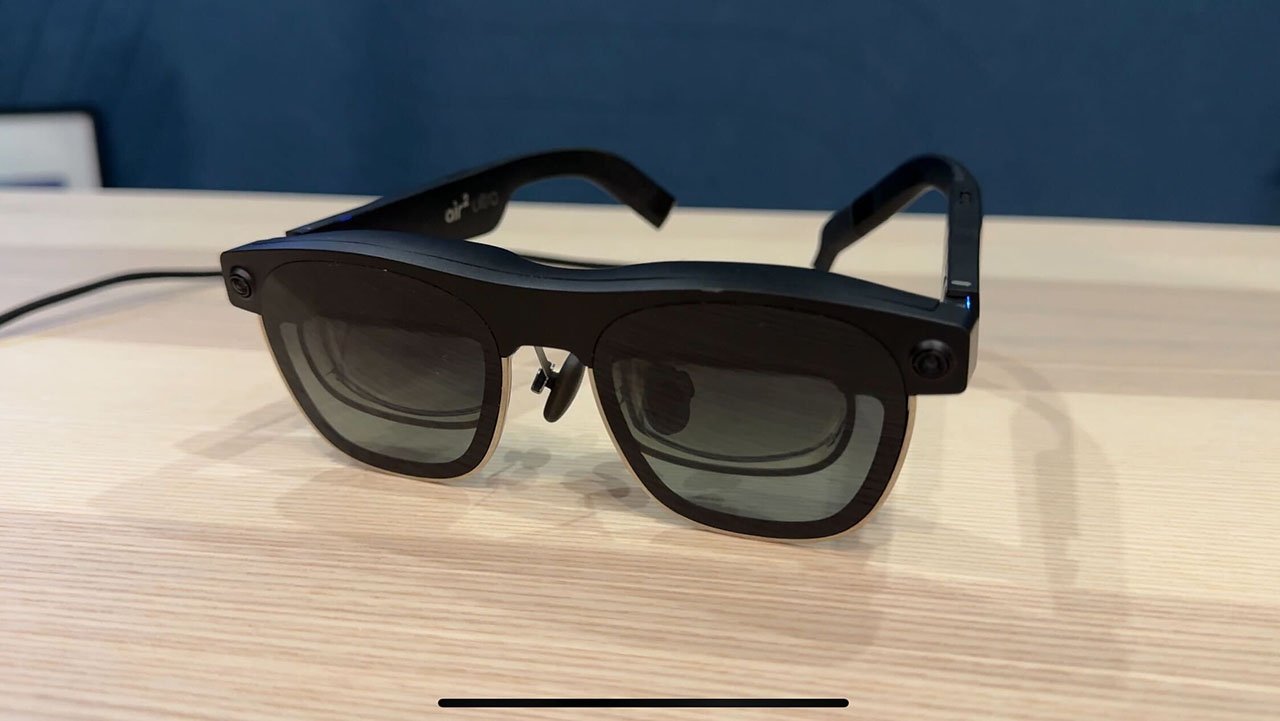
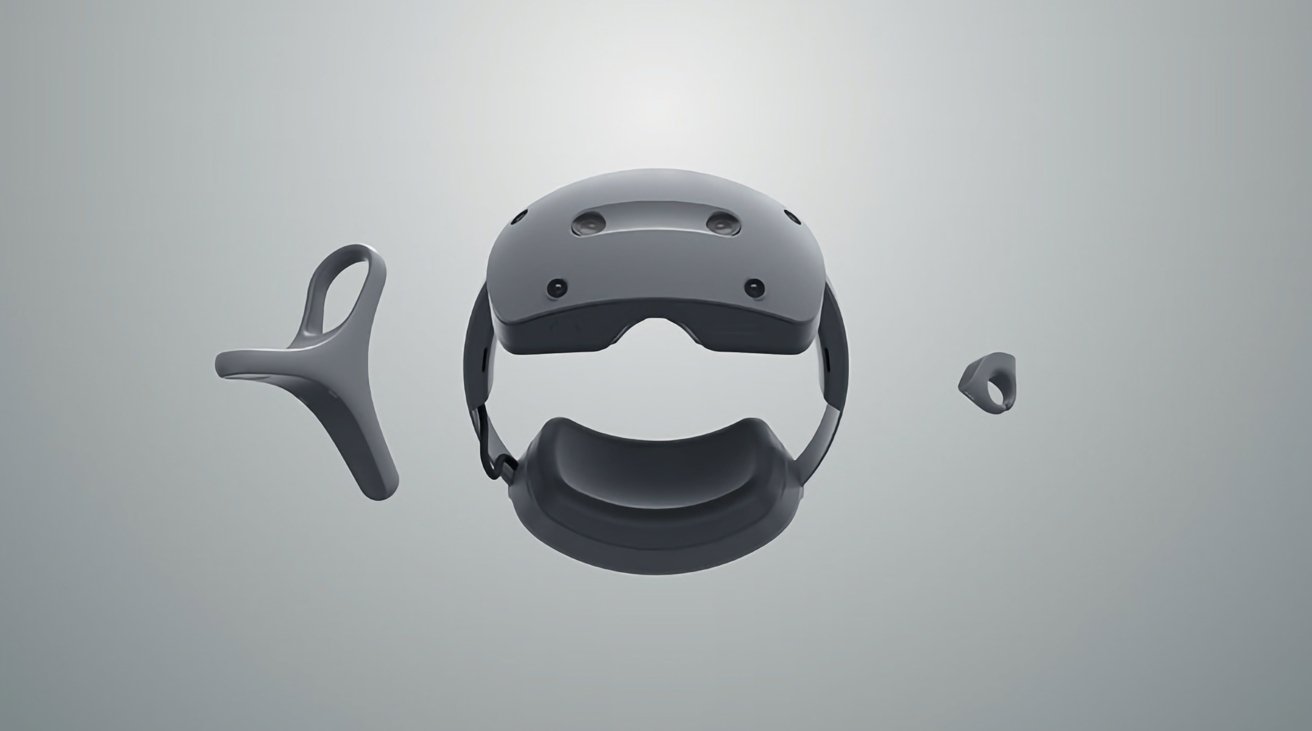
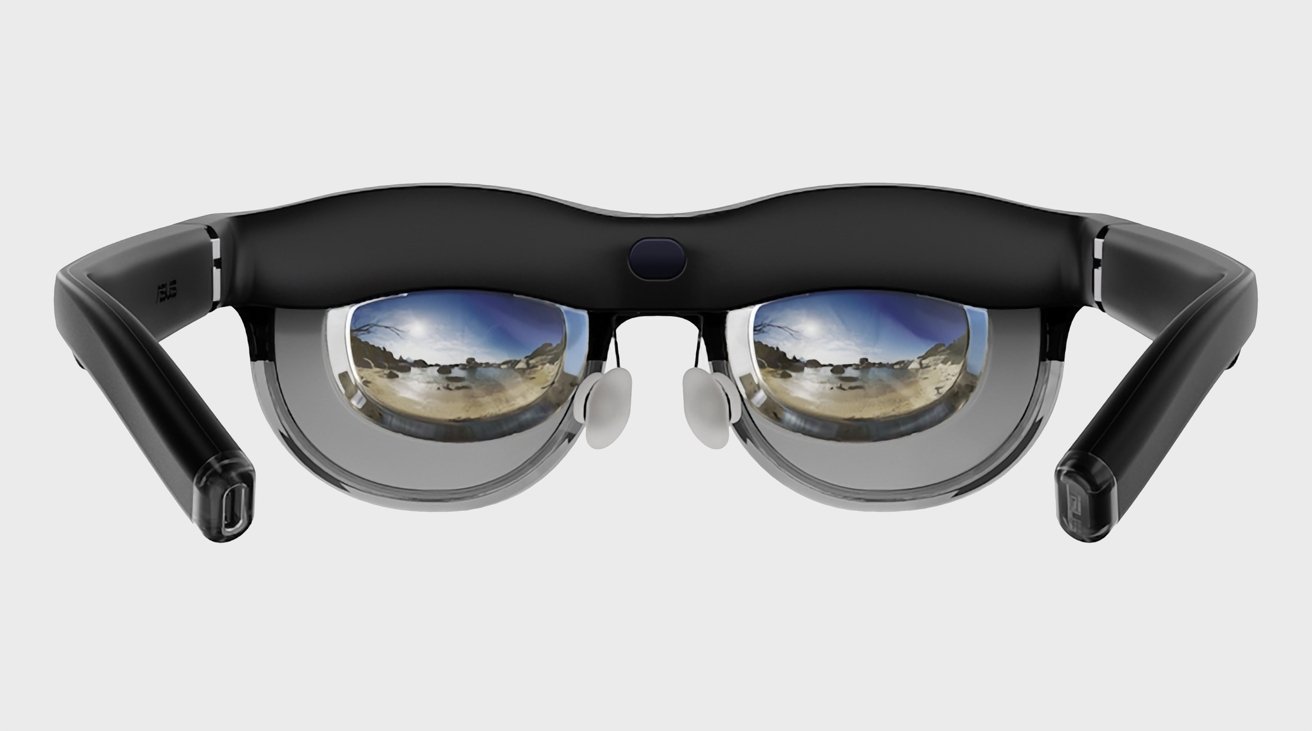
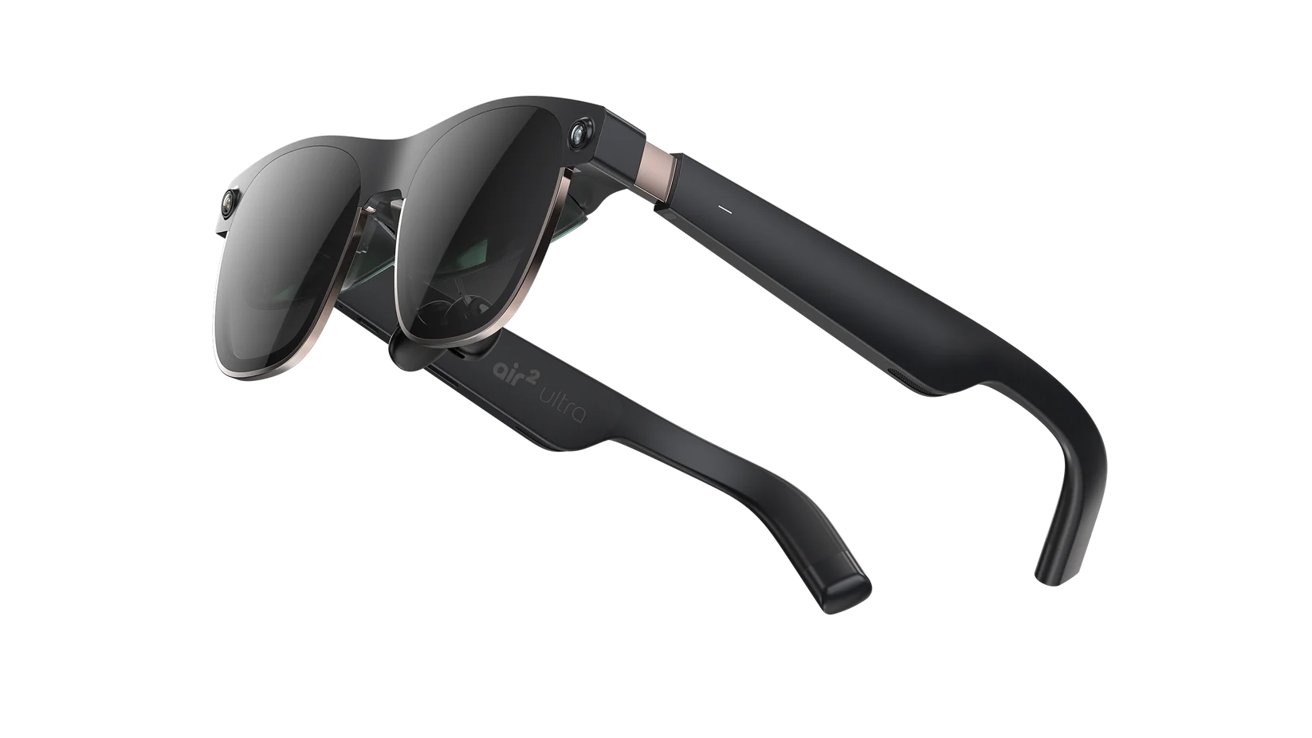
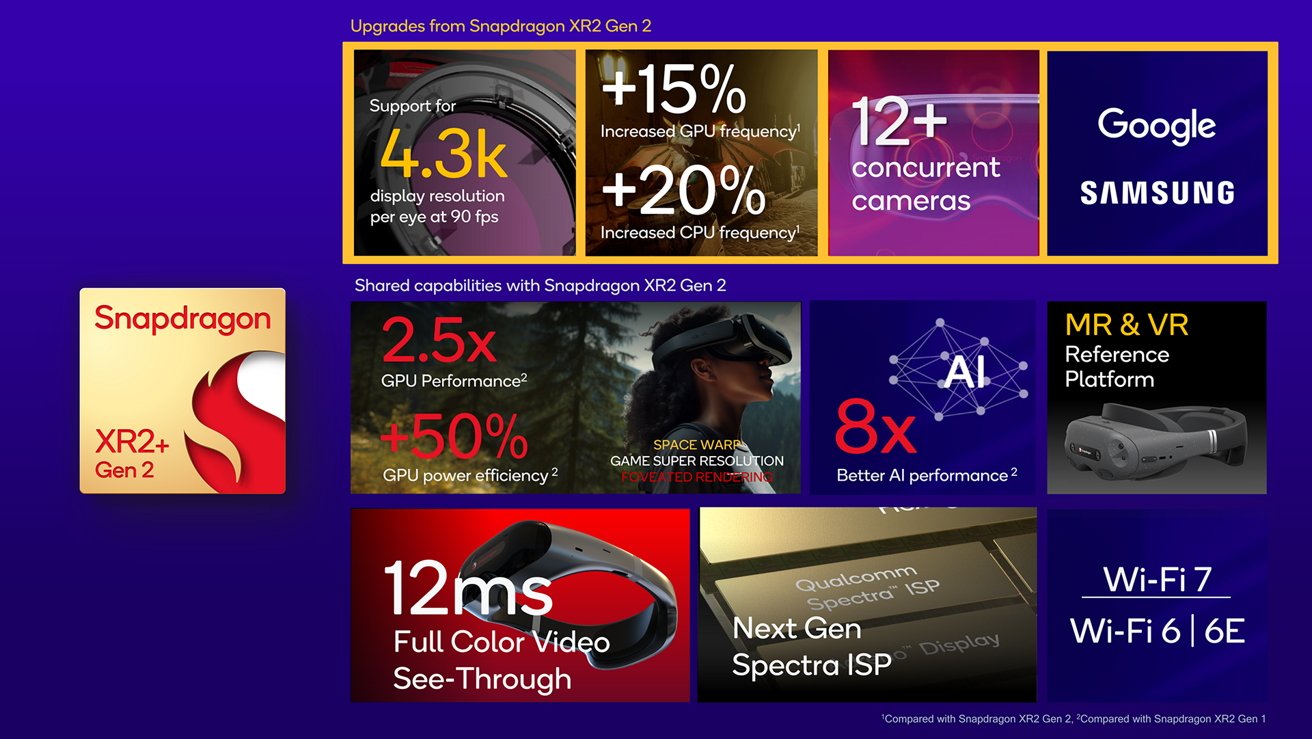







-m.jpg)






 Charles Martin
Charles Martin
 Marko Zivkovic
Marko Zivkovic
 Andrew Orr
Andrew Orr
 Amber Neely
Amber Neely

 William Gallagher and Mike Wuerthele
William Gallagher and Mike Wuerthele











19 Comments
Qualcomm, Google, Samsung need to wait until they get their hands on an actual Apple Vision device before the real rip off begins. The spec sheet that was released by Qualcomm was just a wish list.
The software/hardware integration, chip performance and capability is where they will fail. Android (Oracle) OS is a hollow shell beyond smartphones. Ever wonder why it hasn't advanced beyond phones.